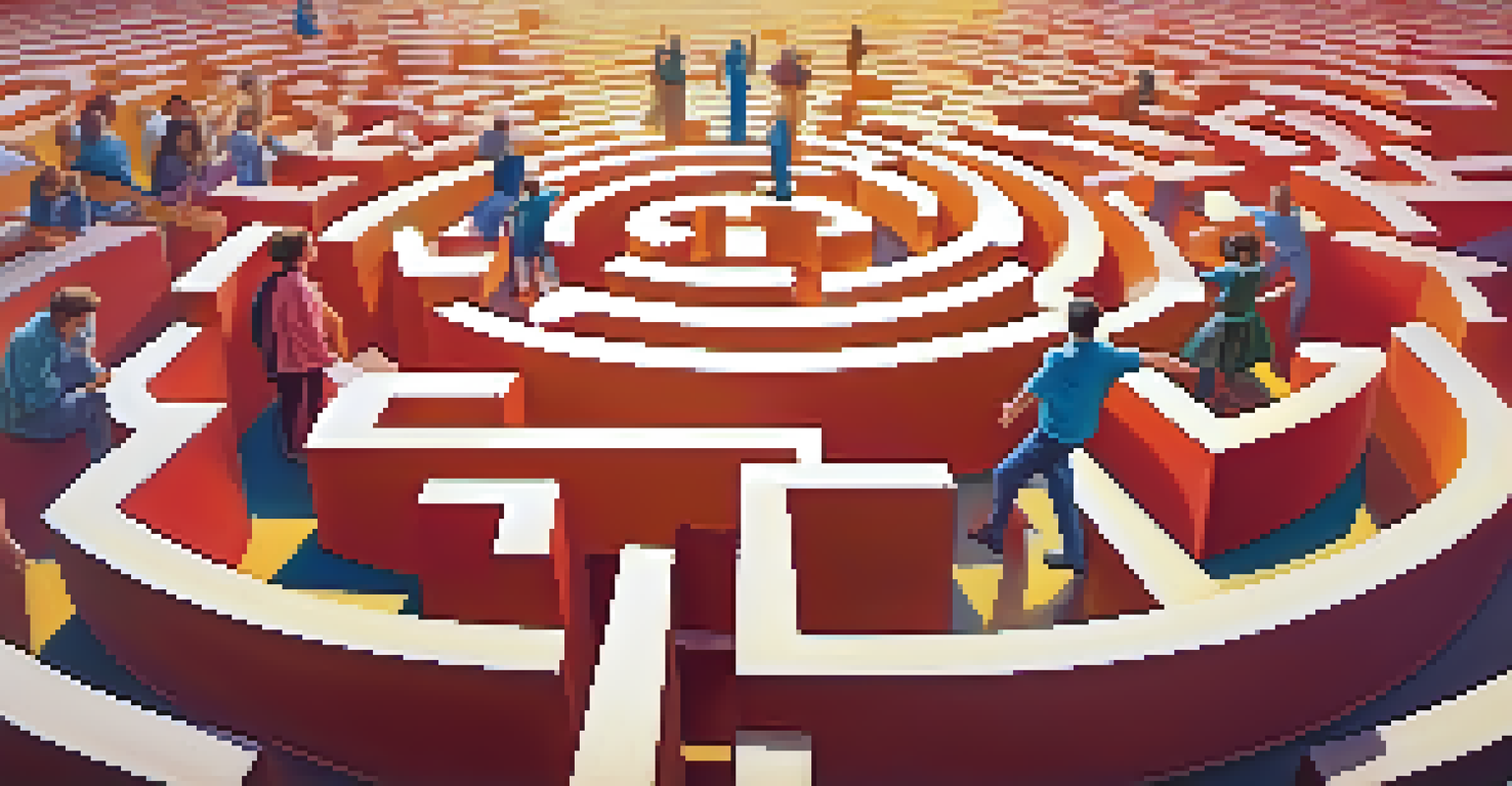Critical Thinking vs. Creative Thinking: Key Differences

Defining Critical Thinking and Creative Thinking
Critical thinking involves analyzing facts to form a judgment. It’s about evaluating information logically and systematically. This type of thinking helps in problem-solving and decision-making by focusing on evidence and reasoning.
The ability to think critically is the foundation for all other types of thinking, including creative thinking.
On the other hand, creative thinking is about generating new ideas and approaches. It encourages innovation and allows thinking outside the box. Creative thinkers often look for unique solutions rather than sticking to traditional methods.
Both types of thinking are essential in different contexts, but they serve distinct purposes. Critical thinking ensures that decisions are well-founded, while creative thinking fosters imagination and originality.
The Role of Logic in Critical Thinking
Logic is the backbone of critical thinking. It involves structured reasoning that leads to sound conclusions based on given premises. Think of it as assembling a puzzle where each piece must fit perfectly to form a clear picture.

In critical thinking, one assesses arguments, identifies biases, and considers alternative viewpoints. This process is vital in fields like science, law, and business, where decisions must be backed by solid evidence.
Critical Thinking Analyzes Information
Critical thinking focuses on evaluating facts and evidence to make informed decisions.
Ultimately, critical thinking promotes clarity and helps mitigate errors in judgment. By relying on logical reasoning, individuals can navigate complex problems effectively.
The Importance of Imagination in Creative Thinking
Imagination is at the heart of creative thinking. It allows individuals to envision possibilities that don’t yet exist, leading to groundbreaking ideas and innovations. Think of it as opening a door to a room filled with endless opportunities.
Creativity is intelligence having fun.
Creative thinkers often use techniques like brainstorming and free writing to unlock their imagination. These methods encourage exploring various perspectives and concepts without immediate judgment.
By embracing imagination, creative thinking fosters a culture of experimentation. It emphasizes that there are no wrong answers, paving the way for discovery and unique solutions.
Approaches to Problem-Solving: Critical vs. Creative
When faced with a problem, critical thinkers analyze the situation methodically. They break down the issue, weigh the pros and cons, and come up with a logical solution based on existing knowledge.
Conversely, creative thinkers might approach the same problem by brainstorming multiple possibilities. They are not limited by conventional methods and instead consider all angles, no matter how unconventional.
Creative Thinking Sparks Innovation
Creative thinking encourages the generation of new ideas, promoting unique solutions and exploration.
Both approaches can be valuable; however, the effectiveness often depends on the context. In some situations, a structured solution is necessary, while in others, a fresh perspective may lead to a breakthrough.
When to Use Critical Thinking
Critical thinking is particularly useful in situations that require analysis or evaluation. For instance, it’s essential in academic research, where arguments must be supported by evidence.
It’s also crucial in business contexts, where decision-making relies heavily on data interpretation and strategy. Leaders often need to evaluate risks and benefits before proceeding with a course of action.
Overall, knowing when to apply critical thinking can enhance decision-making and lead to more effective outcomes in various professional fields.
When to Embrace Creative Thinking
Creative thinking shines in environments that encourage innovation and exploration. Industries like advertising, design, and technology thrive on fresh ideas and unique solutions.
It’s particularly beneficial during brainstorming sessions, where the goal is to generate as many ideas as possible without constraints. This freedom enables teams to break away from the ordinary.
Balance Both Thinking Styles
Combining critical and creative thinking enhances problem-solving abilities and leads to more effective outcomes.
Moreover, creative thinking can also be applied in everyday life. Whether planning a party or finding a new route to work, thinking creatively can make mundane tasks more enjoyable.
The Synergy Between Critical and Creative Thinking
While critical and creative thinking are distinct, they complement each other beautifully. For example, a creative idea may need critical evaluation to determine its feasibility. This synergy can lead to innovative yet practical solutions.
In many successful projects, teams utilize both types of thinking. Creative brainstorming sessions can generate unique concepts, which are then refined through critical analysis.

This balance allows for a well-rounded approach to challenges. By harnessing the strengths of both thinking styles, individuals and teams can navigate complexities more effectively.
Conclusion: Balancing Both Thinking Styles
In conclusion, understanding the differences between critical and creative thinking is crucial for personal and professional growth. Each style has its strengths, and knowing when to apply them can lead to better outcomes.
By fostering an environment that encourages both types of thinking, individuals can enhance their problem-solving abilities and innovative capacity. This balance ultimately leads to more comprehensive and effective solutions.
Remember, the key is not to choose one over the other but to recognize the value each brings to the table. Embrace both critical and creative thinking to unlock your full potential.